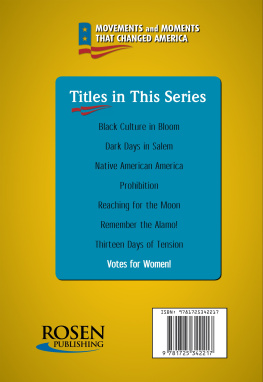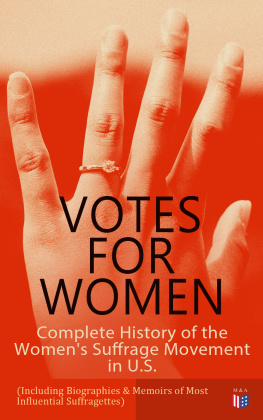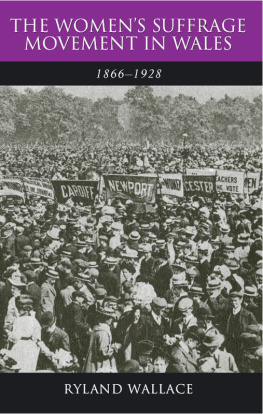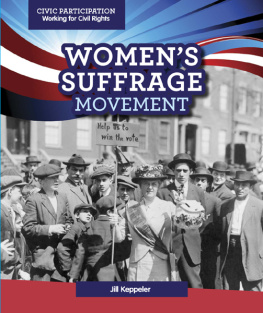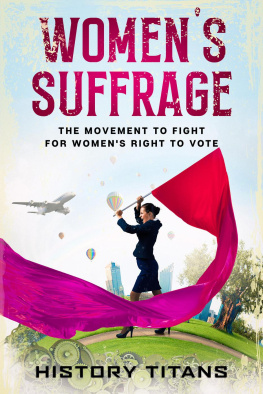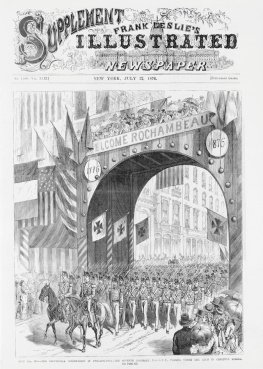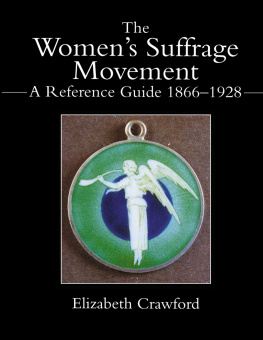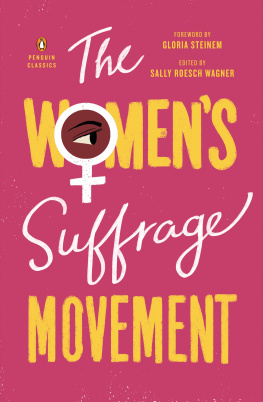Jessica D. Jenkins has worked in museums and cultural institutions for more than ten years specializing in collection and exhibition curation. After receiving a bachelor of arts in history at Quincy University, she completed a master of arts in public history from Central Connecticut State University. As a graduate student Jessica undertook the study of the womens suffrage movement, continuing to deepen her knowledge and study of the subject since. Her previous publications on the topic include articles for the journal Connecticut History and the magazine Connecticut Explored. In addition to her work on suffrage, Jessica co-authored the 2015 book, House of Worth: Fashion Sketches, 19161918 and has written on other historic topics such as World War I poster art. She previously served as curator of collections for the Litchfield Historical Society, Litchfield, Connecticut, where she was responsible for the management of the institutions museum collection and exhibition program of its two museums, the Litchfield History Museum and the Tapping Reeve House and Litchfield Law School. In her current role as director of collections for Minnetrista, Muncie, Indiana, Jessica plays a key role in the care of the institutions historic collection and the telling of its stories.
W omens suffrage has long been an interest of mineprobably stemming back to my obsessive watching of Winifred Banks proudly wearing her Votes for Women sash in Mary Poppins. As I grew out of my childhood fascination stage, I came to understand that one woman did not drive the gargantuan task of moving the needle forward in terms of voting rights for the female sex; countless women and men all played a part. And they did not just work for one movement, but many around the globe. Without all the players, from the largest to the smallest, their goals might not have been reached. Likewise, I cannot take credit for creating this book alone. The writing of history is by nature a collective task. Historians, curators, and researchers must rely on the documents created contemporary to their topic of research. They then consult the work of others, carefully learning what has been written before. The many words they encounter help shape their analysis and interpretation of the ever-fluid thing that is written history. With each new perspective, bits and pieces of the researchers, historic figures, and societies that came before show through in the final product. My gratitude to the suffragists, historians, museum professionals, journalists, and researchers who have dived and continue to dive into the story of suffrage is immeasurable. Without their work, this book would not exist.
Specific thanks must also be given to the late Dr. Lynne Templeton Brickley. From the first time I met Lynne, she was generous of her time, knowledge, and enthusiasm for womens history. Over several years, I had the opportunity to interact with her at the museum where she served as a board member, and where I worked on the staff. Whether it was collaborative work on a museum project, or simply conversations about current events, Lynne always encouraged me to share the importance of womens history with others. At the same time, a debt is owed to the many teachers and professors who trained me not only in the skills of research methods but also in the art of looking past the paper trail to discover the three-dimensional objects, historic structures, and landscapes that are just as important in telling the stories of history.
Beyond my own research and the inspiration of published sources, I have relied heavily on the help and knowledge of others during the creation of Exploring Womens Suffrage through 50 Historic Treasures. For providing creative insight, assistance in exploring possible artifacts, and making suggestions for objects and stories, I extend my thanks to Susan Berning and Asantewa Boakyewa, Woodrow Wilson House; Dr. Patricia Cunningham, Ohio State University; Thomas Dublin, Binghamton University; Kenneth Florey; Amy Hague, Smith College; Linda Hocking, Litchfield Historical Society; Linda Lopata, The National Susan B. Anthony Museum and House; Rich Malley, curator extraordinaire; Doug Misner, Utah Division of History; Kathleen Pate, Arkansas Womens History Institute; Dr. Heather Prescott, Central Connecticut State University; Alan Rowe, IU Medical Health Archives; Ellen Shea and Diana Carey, Schlesinger Library; Louise Smith; JoAnn Staab; and Shirley Wajda.
Over the nearly two years it took to prepare the manuscript, I also worked with many talented and dedicated professionals at a variety of organizations and businesses who provided additional resources, research assistance, and photography services. In many cases these same people fulfilled the endless stream of image requests I submitted around the countrykeeping their good humor as I juggled dozens of such requests and correspondence at one time. For this support I wish to express my gratitude to Alcione Amos, Mariam Doutriaux, and Susana Raab, Anacostia Community Museum; Eric Paff and Victoria Singer, Architect of the Capitol; Doreen Crowe, Loraine Jones, and Kate Stewart, Arizona Historical Society; Erica Hague and Jena Jones, Atlanta History Center; Madeline Moya, Austin History Center; Michael Lange, University of California, Berkeley, Bancroft Library; Leslie Martin and Angela Hoover, Chicago History Museum; Danielle Davis, City of Portland, Regional Arts and Culture Council; Eisha Neely, Cornell University, Carl A. Kroch Library; Mindy A. Leisenring, Cortland County Historical Society; Stephanie Lucas and Donna Braden, The Henry Ford; Jim Janke; Nikaela J. Zimmerman, Matt Renick, and Nancy Sherbert, Kansas Historical Society; Pally Polhemus, Knox County Public Library; Ann McShane, Library Company of Philadelphia; Michael North, Kelly Dyson, and Alexis Valentine, Library of Congress; Dana Puga, Library of Virginia; Alex Dubois, Litchfield Historical Society; Jacqueline Roshia, Rona Dixson, and Michael Roets, Lorenzo State Historic Site; Sofia Yalouris, Maine Historical Society; Adam Taylor and the Library Permissions Team, Minnesota Historical Society; Dennis Northcott, Missouri History Museum; Margarete Ordon, Kendra Newhall, and Lori Ereth, Montana Historical Society; David Corrigan, Museum of Connecticut History; Christine Pittsley, Connecticut State Library; Jennifer Krafchik, National Womans Party; Lauren Murphree, Camille Tyndall Watson, Ashley Yandle, and William H. Brown, North Carolina Office of Archives and History; Eleanor Gillers, New York Historical Society; Ashley Hopkins-Benton and Robyn Gibson, New York State Museum; Nadine Sergejeff, Newark Public Library; Kay Peterson and Debra Hashim, National Museum of American History; Doug Remley and Carrie Feldman, National Museum of African American History and Culture; Sarah Biller, Oklahoma Historical Society; Jo Ellen Mack, Old State House Museum; Victor Sanders, Portland Parks and Recreation; Ann Lowder, Robbins Hunter Museum; Kiki Smith and Stan Sherer, Smith College; the staff at Untapped Cities, LLC; Eileen Price, Washington State Historical Society; Aaron Mathieu and Dani Tippmann, Whitley County Historical Society; Frederick Stipe and Tim Hodgdon, Wilson Library at University of North Carolina, Chapel Hill; Scott Roller and Lisa R. Marine, Wisconsin Historical Society; and Andrew Phillips, Woodrow Wilson Presidential Library and Museum.
My deep appreciation also goes out to my editor at Rowman & Littlefield, Charles Harmon. He not only guided me through the publication process, but also provided valuable feedback along the way, answering my many, many questions. Bob Beatty, John Marks, and Rebecca Shrum, my editors at AASLH, all played vital roles in helping to form and refine the manuscript, both in its very earliest stages and the very last. To my friends and family who have provided unlimited support during this project I cannot say, thank you enough. Especially to Cathy, Linda, Liz, Megan, Jess, and my former Seminar for Historical Administration classmates who all sent more than one email or message telling me, youve got this!


